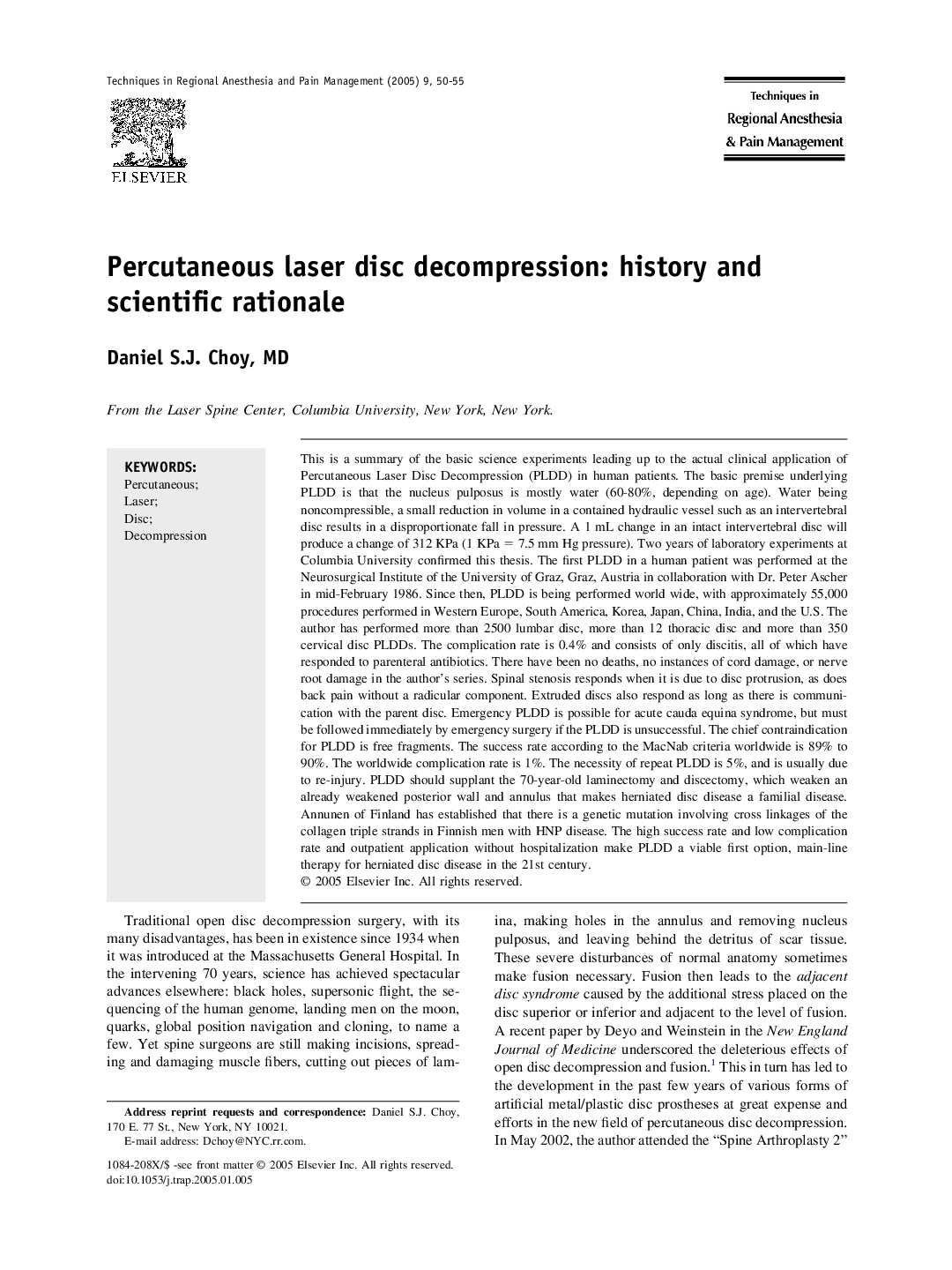| کد مقاله | کد نشریه | سال انتشار | مقاله انگلیسی | نسخه تمام متن |
|---|---|---|---|---|
| 9101912 | 1152034 | 2005 | 6 صفحه PDF | دانلود رایگان |
عنوان انگلیسی مقاله ISI
Percutaneous laser disc decompression: history and scientific rationale
دانلود مقاله + سفارش ترجمه
دانلود مقاله ISI انگلیسی
رایگان برای ایرانیان
موضوعات مرتبط
علوم پزشکی و سلامت
پزشکی و دندانپزشکی
بیهوشی و پزشکی درد
پیش نمایش صفحه اول مقاله

چکیده انگلیسی
This is a summary of the basic science experiments leading up to the actual clinical application of Percutaneous Laser Disc Decompression (PLDD) in human patients. The basic premise underlying PLDD is that the nucleus pulposus is mostly water (60-80%, depending on age). Water being noncompressible, a small reduction in volume in a contained hydraulic vessel such as an intervertebral disc results in a disproportionate fall in pressure. A 1 mL change in an intact intervertebral disc will produce a change of 312 KPa (1 KPa = 7.5 mm Hg pressure). Two years of laboratory experiments at Columbia University confirmed this thesis. The first PLDD in a human patient was performed at the Neurosurgical Institute of the University of Graz, Graz, Austria in collaboration with Dr. Peter Ascher in mid-February 1986. Since then, PLDD is being performed world wide, with approximately 55,000 procedures performed in Western Europe, South America, Korea, Japan, China, India, and the U.S. The author has performed more than 2500 lumbar disc, more than 12 thoracic disc and more than 350 cervical disc PLDDs. The complication rate is 0.4% and consists of only discitis, all of which have responded to parenteral antibiotics. There have been no deaths, no instances of cord damage, or nerve root damage in the author's series. Spinal stenosis responds when it is due to disc protrusion, as does back pain without a radicular component. Extruded discs also respond as long as there is communication with the parent disc. Emergency PLDD is possible for acute cauda equina syndrome, but must be followed immediately by emergency surgery if the PLDD is unsuccessful. The chief contraindication for PLDD is free fragments. The success rate according to the MacNab criteria worldwide is 89% to 90%. The worldwide complication rate is 1%. The necessity of repeat PLDD is 5%, and is usually due to re-injury. PLDD should supplant the 70-year-old laminectomy and discectomy, which weaken an already weakened posterior wall and annulus that makes herniated disc disease a familial disease. Annunen of Finland has established that there is a genetic mutation involving cross linkages of the collagen triple strands in Finnish men with HNP disease. The high success rate and low complication rate and outpatient application without hospitalization make PLDD a viable first option, main-line therapy for herniated disc disease in the 21st century.
ناشر
Database: Elsevier - ScienceDirect (ساینس دایرکت)
Journal: Techniques in Regional Anesthesia and Pain Management - Volume 9, Issue 1, January 2005, Pages 50-55
Journal: Techniques in Regional Anesthesia and Pain Management - Volume 9, Issue 1, January 2005, Pages 50-55
نویسندگان
Daniel S.J. MD,